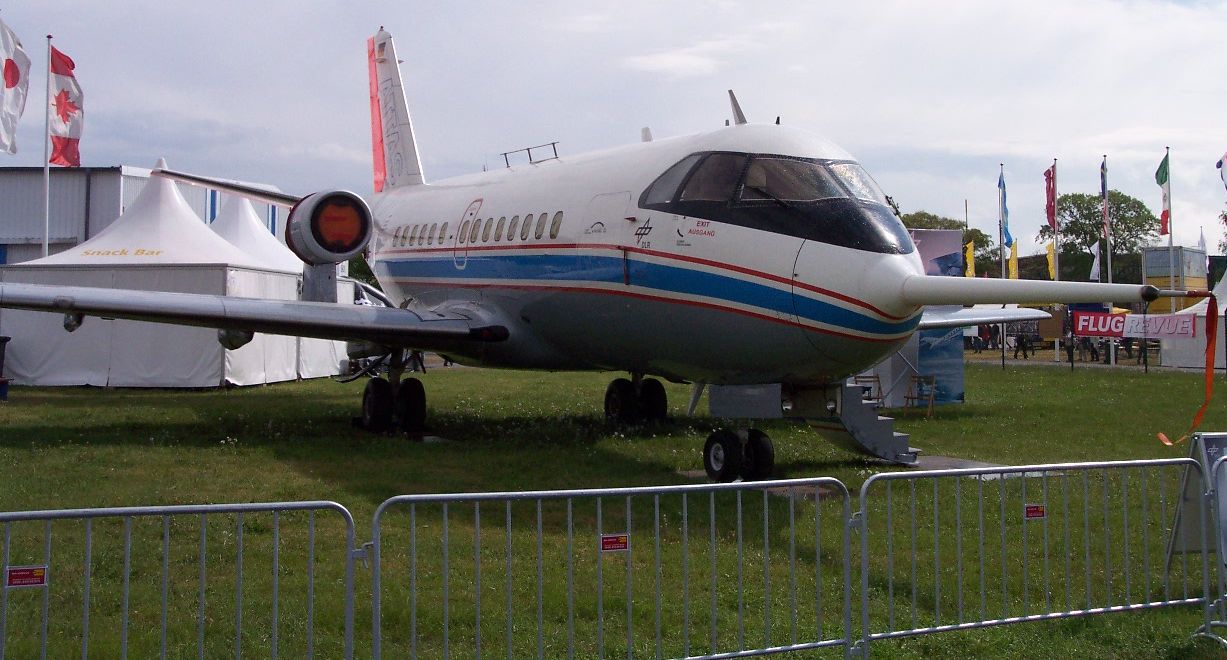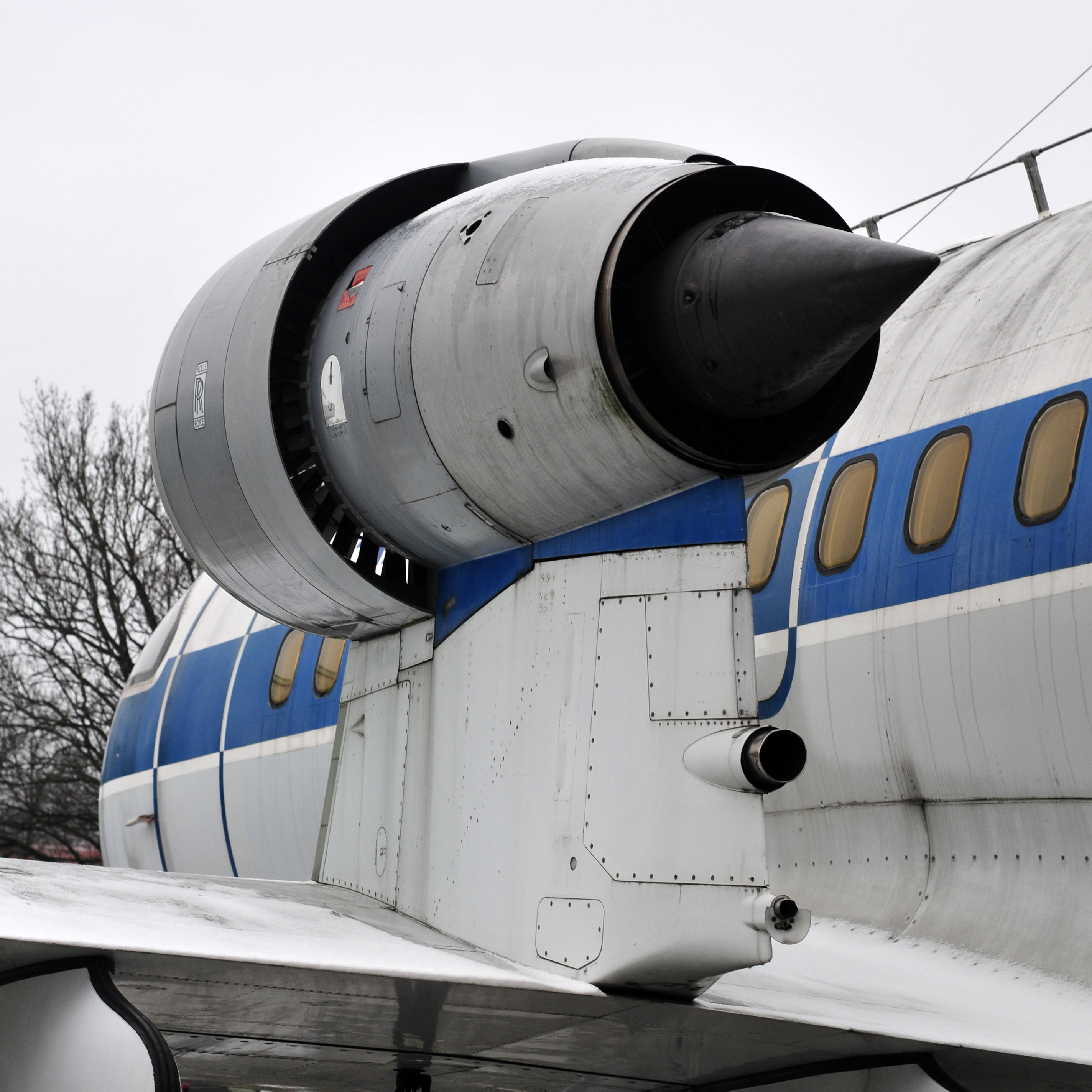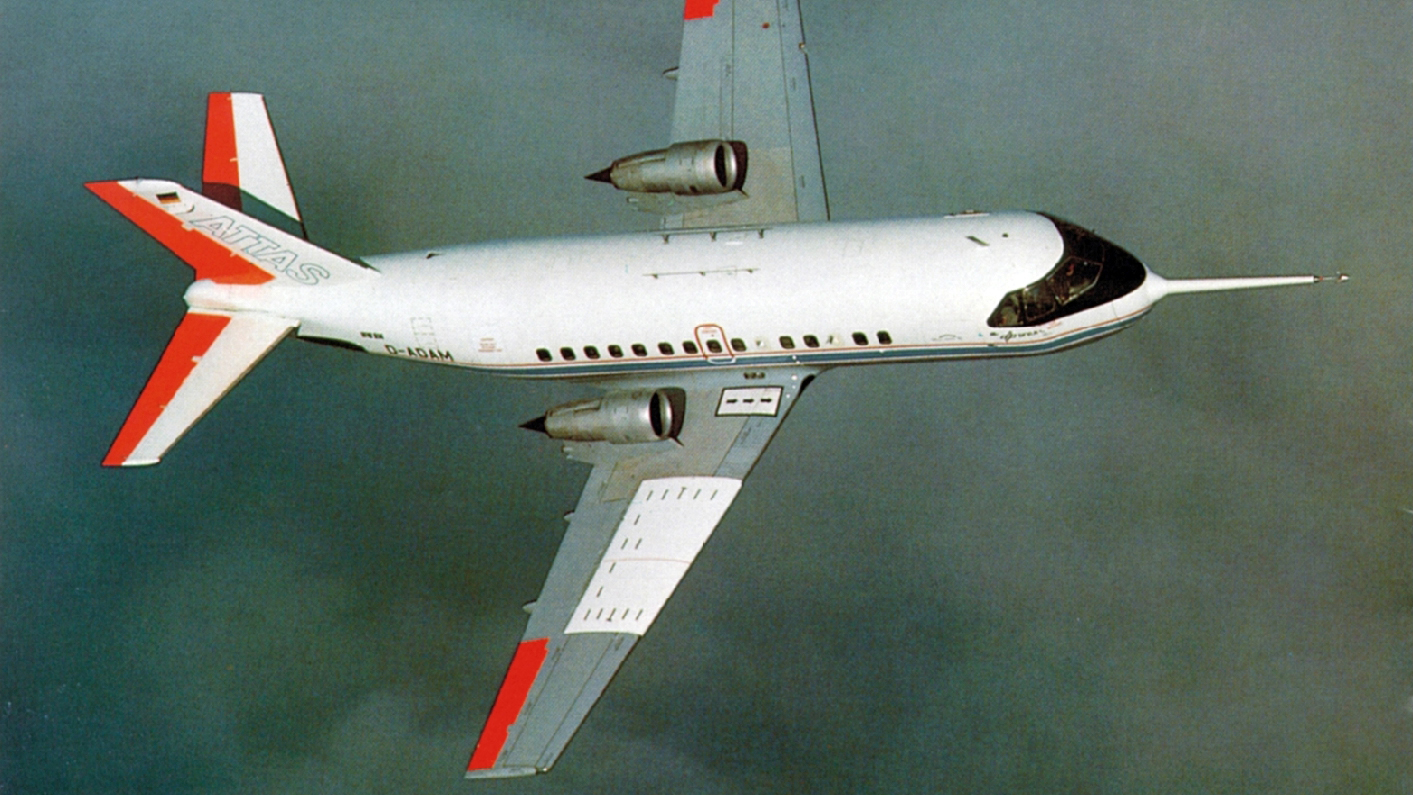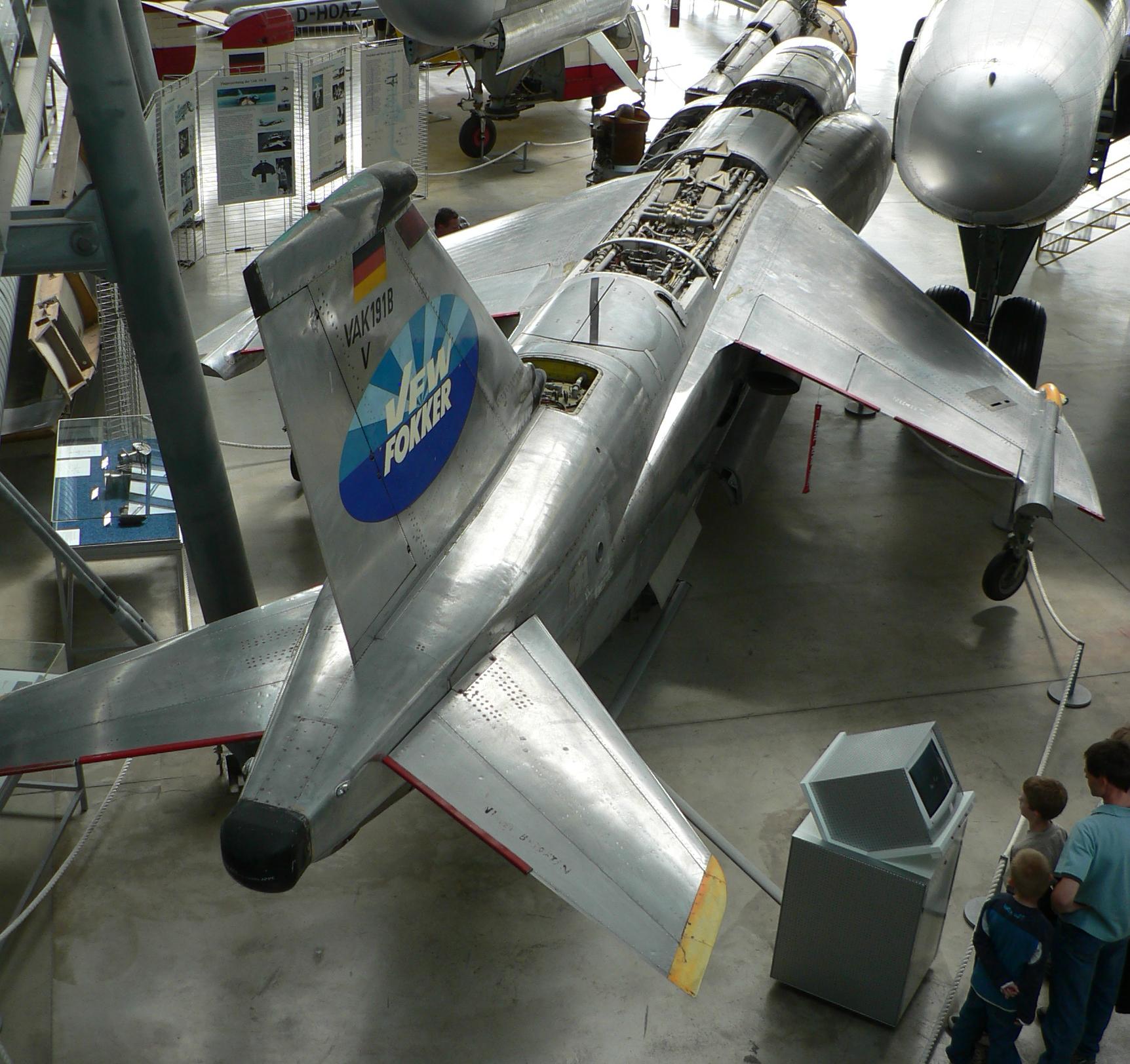|
VFW-Fokker
VFW-Fokker GmbH was a joint venture of Fokker and Vereinigte Flugtechnische Werke (VFW) started in 1969 that, from then on, controlled the ERNO initiative. The Entwicklungsring Nord (Northern development circle) — abbreviated ERNO — was a 1961 joint venture of Bremen-based Weserflug and Focke-Wulf with Hamburger Flugzeugbau to develop parts for rockets and get involved in space activities. In 1961 work began on a small, jet-powered transport aircraft initially styled Erno-61-4. After Weserflug and Focke Wulf formally merged into Vereinigte Flugtechnische Werke (VFW) in 1964, the machine was redesignated VFW 614. The draft design was amended to a STOL 40-44 passenger jet with overwing engines, for easier operation from unprepared runways. German government subsidies enabled development to start in earnest in 1966. The first prototype started in August 1968, but then VFW and Fokker of the Netherlands formed a joint transnational holding company. VFW-Fokker teamed with Rep ... [...More Info...] [...Related Items...] OR: [Wikipedia] [Google] [Baidu] |
VFW-614 DLR Vr
The VFW-Fokker 614 (also VFW 614) was a twin-engined jetliner designed and constructed by West German aviation company VFW-Fokker. It is the first jet-powered passenger liner to be developed and produced in West Germany (the East German Baade 152 being the first German jet airliner), as well as the first German-built civil aircraft to have been manufactured for a decade.Mendenhall 2005, p. 326. The VFW 614 was originally proposed during the early 1960s as the E.614, which was a concept for a 36–40 seat aircraft by a consortium of West German aircraft companies, who were soon re-organised into Vereinigte Flugtechnische Werke (VFW). Originally intended as a Douglas DC-3 replacement, its most distinctive feature was that its engines were mounted in pods on pylons above the wing. The VFW 614 was produced in small numbers during the early- to mid-1970s by VFW-Fokker, a company resulting from a merger between VFW and the Dutch aircraft company Fokker. The program was cancelled in 197 ... [...More Info...] [...Related Items...] OR: [Wikipedia] [Google] [Baidu] |
VFW-Fokker 614
The VFW-Fokker 614 (also VFW 614) was a twin-engined jetliner designed and constructed by West German aviation company VFW-Fokker. It is the first jet-powered passenger liner to be developed and produced in West Germany (the East German Baade 152 being the first German jet airliner), as well as the first German-built civil aircraft to have been manufactured for a decade.Mendenhall 2005, p. 326. The VFW 614 was originally proposed during the early 1960s as the E.614, which was a concept for a 36–40 seat aircraft by a consortium of West German aircraft companies, who were soon re-organised into Vereinigte Flugtechnische Werke (VFW). Originally intended as a Douglas DC-3 replacement, its most distinctive feature was that its engines were mounted in pods on pylons above the wing. The VFW 614 was produced in small numbers during the early- to mid-1970s by VFW-Fokker, a company resulting from a merger between VFW and the Dutch aircraft company Fokker. The program was cancelled i ... [...More Info...] [...Related Items...] OR: [Wikipedia] [Google] [Baidu] |
Fokker VFW
VFW-Fokker GmbH was a joint venture of Fokker and Vereinigte Flugtechnische Werke (VFW) started in 1969 that, from then on, controlled the ERNO initiative. The Entwicklungsring Nord (Northern development circle) — abbreviated ERNO — was a 1961 joint venture of Bremen-based Weserflug and Focke-Wulf with Hamburger Flugzeugbau to develop parts for rockets and get involved in space activities. In 1961 work began on a small, jet-powered transport aircraft initially styled Erno-61-4. After Weserflug and Focke Wulf formally merged into Vereinigte Flugtechnische Werke (VFW) in 1964, the machine was redesignated VFW 614. The draft design was amended to a STOL 40-44 passenger jet with overwing engines, for easier operation from unprepared runways. German government subsidies enabled development to start in earnest in 1966. The first prototype started in August 1968, but then VFW and Fokker of the Netherlands formed a joint transnational holding company. VFW-Fokker teamed with Repu ... [...More Info...] [...Related Items...] OR: [Wikipedia] [Google] [Baidu] |
Vereinigte Flugtechnische Werke
Vereinigte Flugtechnische Werke (VFW) was a West German aerospace manufacturer. The company was formed by the 1964 merger of two German aerospace firms, Focke-Wulf and Weser Flugzeugbau GmbH (Weserflug). The formation of VFW was a natural outcome, as the two companies had been collaborating, along with Hamburger Flugzeugbau (HFB), in the rocket technology development alliance Entwicklungsring Nord (ERNO) group since 1961, the move was seen as a natural fit. Such collaborative efforts continued throughout VFW's operating years, not just through ERNO but also with the Dutch aircraft producer Fokker, who formed a joint venture with the firm, VFW-Fokker GmbH, during 1969 to promote. Collaboration with Fokker waned substantially over the years, having been greatly soured by the poor results of the VFW 614 programme, resulting in VFW-Fokker GmbH being wound up in 1980. During 1981, VFW was acquired by its domestic rival, Messerschmitt-Bölkow-Blohm (MBB), and was largely integrated ... [...More Info...] [...Related Items...] OR: [Wikipedia] [Google] [Baidu] |
Entwicklungsring Nord
The Entwicklungsring Nord (Northern development circle) - abbreviated ERNO - was a 1961 joint venture of Bremen-based Weserflug and Focke-Wulf with Hamburger Flugzeugbau to develop parts for rockets and get involved in space activities. Jet-powered aircraft VFW 614 In 1961 work began on a small, jet-powered aircraft initially styled Erno-61-4. After Weserflug and Focke Wulf formally merged into Vereinigte Flugtechnische Werke (VFW) in 1964, the machine was redesignated VFW 614. The draft design was amended to a STOL 40-44 passenger jet with overwing engines, for easier operation from unprepared runways. German government subsidies enabled development to start in earnest in 1966. The first prototype started in August 1968, but then VFW and Fokker of the Netherlands formed a joint transnational holding company. The prototype flew on 14 July 1971 but crashed next February. Two more prototypes flew in 1972. German, FAA, and French DGA certifications completed in 1974, 1975, & 1976 r ... [...More Info...] [...Related Items...] OR: [Wikipedia] [Google] [Baidu] |
Spacelab
Spacelab was a reusable laboratory developed by European Space Agency (ESA) and used on certain spaceflights flown by the Space Shuttle. The laboratory comprised multiple components, including a pressurized module, an unpressurized carrier, and other related hardware housed in the Shuttle's cargo bay. The components were arranged in various configurations to meet the needs of each spaceflight. Spacelab components flew on a total of about 32 Shuttle missions, depending on how such hardware and missions are tabulated. Spacelab allowed scientists to perform experiments in microgravity in geocentric orbit. There was a variety of Spacelab-associated hardware, so a distinction can be made between the major Spacelab program missions with European scientists running missions in the Spacelab habitable module, missions running other Spacelab hardware experiments, and other Space Transportation System (STS) missions that used some component of Spacelab hardware. There is some variation ... [...More Info...] [...Related Items...] OR: [Wikipedia] [Google] [Baidu] |
Fokker
Fokker was a Dutch aircraft manufacturer named after its founder, Anthony Fokker. The company operated under several different names. It was founded in 1912 in Berlin, Germany, and became famous for its fighter aircraft in World War I. In 1919 the company moved its operations to the Netherlands. During its most successful period in the 1920s and 1930s, it dominated the civil aviation market. Fokker went into bankruptcy in 1996, and its operations were sold to competitors. History Fokker in Germany At age 20, while studying in Germany, Anthony Fokker built his initial aircraft, the ''Spin'' (Spider)—the first Dutch-built plane to fly in his home country. Taking advantage of better opportunities in Germany, he moved to Berlin, where in 1912, he founded his first company, Fokker Aeroplanbau, later moving to the Görries suburb just southwest of Schwerin (at ), where the current company was founded, as Fokker Aviatik GmbH, on 12 February 1912. World War I Fokker capitaliz ... [...More Info...] [...Related Items...] OR: [Wikipedia] [Google] [Baidu] |
Fokker F28
The Fokker F28 Fellowship is a twin-engined, short-range jet airliner designed and built by Dutch aircraft manufacturer Fokker. Following the Fokker F27 Friendship, an early and commercially successful turboprop-powered regional airliner, Fokker decided to embark on developing a new turbojet-powered commuter aircraft that would build upon its experiences with the F27. During the design phase, a high level of attention was paid to market research and operator concerns; amongst other changes made, the prospective jetliner was increased in size, changing its maximum seating capacity from 50 to 65 passengers. During April 1962, Fokker announced the formal launch of the F28 Fellowship. On 9 May 1967, the prototype F28-1000 conducted its maiden flight. Type certification was achieved on 24 February 1969, and the first revenue-earning flight by Braathens was performed on 28 March 1969. Following its entry to service, Fokker developed multiple variants of the F28; one model, th ... [...More Info...] [...Related Items...] OR: [Wikipedia] [Google] [Baidu] |
VTOL
A vertical take-off and landing (VTOL) aircraft is one that can take off and land vertically without relying on a runway. This classification can include a variety of types of aircraft including helicopters as well as thrust-vectoring fixed-wing aircraft and other hybrid aircraft with powered rotors such as cyclogyros/cyclocopters and gyrodynes. Some VTOL aircraft can operate in other modes as well, such as CTOL (conventional take-off & landing), STOL (short take-off & landing), or STOVL (short take-off & vertical landing). Others, such as some helicopters, can only operate as VTOL, due to the aircraft lacking landing gear that can handle taxiing. VTOL is a subset of V/STOL (vertical or short take-off & landing). Some lighter-than-air aircraft also qualify as VTOL aircraft, as they can hover, takeoff and land with vertical approach/departure profiles. Electric vertical takeoff and landing aircraft, or eVTOLs, are being developed along with more autonomous flight con ... [...More Info...] [...Related Items...] OR: [Wikipedia] [Google] [Baidu] |
German Aerospace Center
The German Aerospace Center (german: Deutsches Zentrum für Luft- und Raumfahrt e.V., abbreviated DLR, literally ''German Center for Air- and Space-flight'') is the national center for aerospace, energy and transportation research of Germany, founded in 1969. It is headquartered in Cologne with 35 locations throughout Germany. The DLR is engaged in a wide range of research and development projects in national and international partnerships. DLR also acts as the German space agency and is responsible for planning and implementing the German space programme on behalf of the German federal government. As a project management agency, DLR coordinates and answers the technical and organisational implementation of projects funded by a number of German federal ministries. As of 2020, the German Aerospace Center had a national budget of €1.261 billion. Overview DLR has approximately 10.000 employees at 30 locations in Germany. Institutes and facilities are spread over 13 site ... [...More Info...] [...Related Items...] OR: [Wikipedia] [Google] [Baidu] |
Société Anonyme Belge De Constructions Aéronautiques
SABCA (Sociétés Anonyme Belge de Constructions Aéronautiques) is a Belgian aerospace company. Its main sectors of activity are civil aviation, space and defence. SABCA was established during 1920. Presently, it is owned by the French aircraft manufacturer Dassault Group and Dutch aerospace company Fokker, the latter in turn being a subsidiary of GKN. History During 1920, SABCA was founded with the purpose of locally designing and building aircraft to satisfy Belgium's emerging aviation requirements. Its first manufacturing site was adjacent to Haren Airport, in the suburbs of Brussels. During the Interwar period, the company produced a number of in-house designs, as well as engaging in the manufacture of both civil and military aircraft. Throughout its existence, SABCA has been a prolific user of production licenses, which have authorised the firm to build other manufacturers' aircraft. During 1926, the company constructed a total 15 Airco DH.4 light bombers.Jackson 1987 ... [...More Info...] [...Related Items...] OR: [Wikipedia] [Google] [Baidu] |
Defunct Aircraft Manufacturers Of Germany
Defunct (no longer in use or active) may refer to: * ''Defunct'' (video game), 2014 * Zombie process or defunct process, in Unix-like operating systems See also * * :Former entities * End-of-life product An end-of-life product (EOL product) is a product at the end of the product lifecycle which prevents users from receiving updates, indicating that the product is at the end of its useful life (from the vendor's point of view). At this stage, a ... * Obsolescence {{Disambiguation ... [...More Info...] [...Related Items...] OR: [Wikipedia] [Google] [Baidu] |








